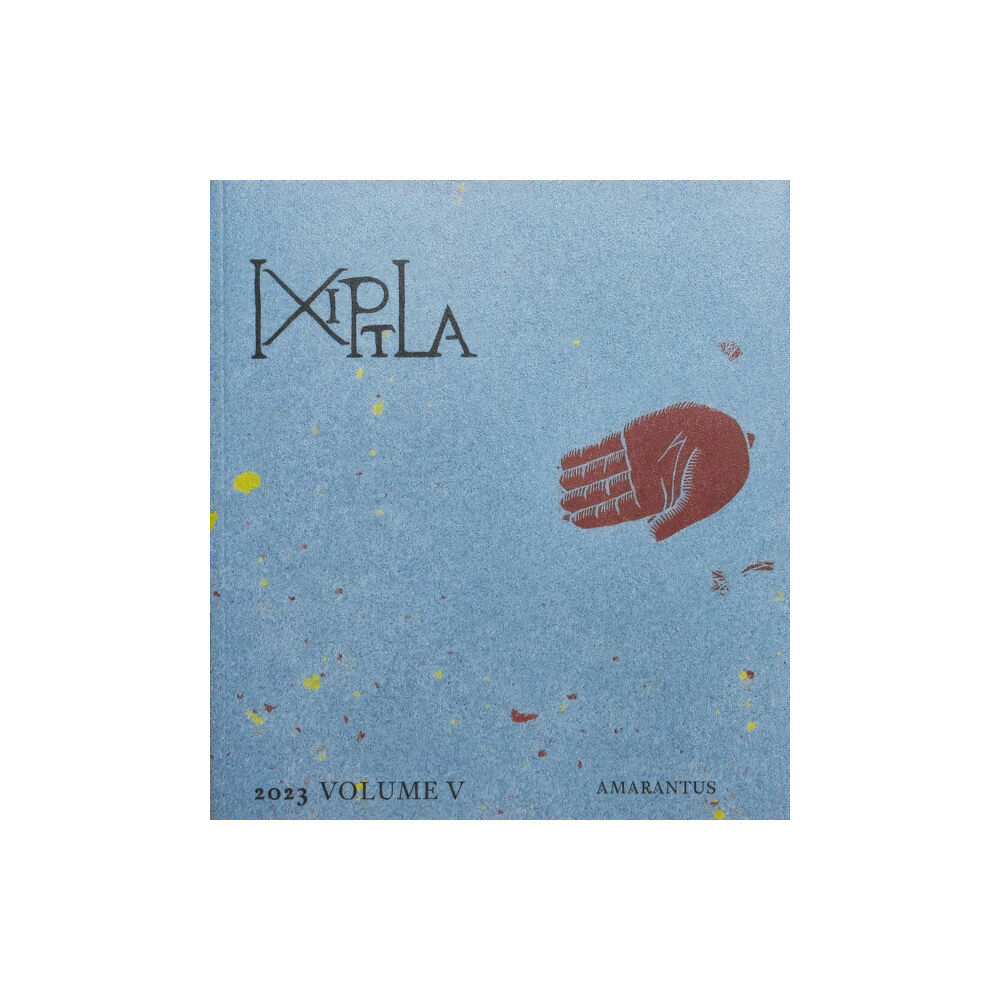- Hem
- Böcker
- Facklitteratur
- Konst
- Ixiptla Volume V Amarantus (häftad, eng)

Ixiptla Volume V Amarantus (häftad, eng)
The word amarantus, which gives name to this publication, comes from the Greek aµ??a????, and describes a flower that never wilts. This plan...
319 kr
365 kr
Slut i lager
- Fri frakt
Fri frakt över 299:-
Snabb leverans
Alltid låga priser
Produktbeskrivning
The word amarantus, which gives name to this publication, comes from the Greek aµ??a????, and describes a flower that never wilts. This plant is still used to prepare ixiptlahuan, which are anthropomorphic and zoomorphic figures that are ritually consumed by some indigenous peoples in Mexico.
The amaranth flower represents the persistence of the “uncomfortable objects” that Castillo Deball makes visible in her historical itineraries and approximations, and that keep speaking to us in the present. Ever since her early works, the artist has explored how chance — a product of the passing of time, erosion, fragmentation, and human intervention, among other factors — determines, to a large extent, the way we learn about the world and the narratives we create.
This interest has led her to investigate the history of certain artifacts and their vicissitudes, reproductions, appropriations, and disappearances. Her formal strategies tend to reflect an inclination toward methodologies used by archaeologists to “trap” their findings.
The resulting objects, or substitute images, conceptually approach the ancient Nahua notion of ixiptla, which can be interpreted as representation, image, and substitute, but also as skin. This concept is indispensable for approaching many of Castillo Deball’s projects from the past decade.
This publication features some of the artist’s long-term collaborators and interlocutors, including: Tatiana Falcón, with whom she made The Painter’s Garden; the organization Cooperación Comunitaria for The Double Life of the Azoyú Codex; Diana Magaloni around the term ixiptla and In Tilli in Tlapalli; Hubert Matiúwàa, through poems from his book Skin People; Barbara Mundy on cartography and the artist’s floor pieces; Jennifer Reynolds-Kaye on Alfred Maudslay; and Catalina Lozano about the history of women who have practiced archaeology in Mexico.
The publication also includes the essay A Dystopic Mesoamerica by Yásnaya Elena and an excerpt of Emiliano Monge’s novel Weaving Darkness.
The amaranth flower represents the persistence of the “uncomfortable objects” that Castillo Deball makes visible in her historical itineraries and approximations, and that keep speaking to us in the present. Ever since her early works, the artist has explored how chance — a product of the passing of time, erosion, fragmentation, and human intervention, among other factors — determines, to a large extent, the way we learn about the world and the narratives we create.
This interest has led her to investigate the history of certain artifacts and their vicissitudes, reproductions, appropriations, and disappearances. Her formal strategies tend to reflect an inclination toward methodologies used by archaeologists to “trap” their findings.
The resulting objects, or substitute images, conceptually approach the ancient Nahua notion of ixiptla, which can be interpreted as representation, image, and substitute, but also as skin. This concept is indispensable for approaching many of Castillo Deball’s projects from the past decade.
This publication features some of the artist’s long-term collaborators and interlocutors, including: Tatiana Falcón, with whom she made The Painter’s Garden; the organization Cooperación Comunitaria for The Double Life of the Azoyú Codex; Diana Magaloni around the term ixiptla and In Tilli in Tlapalli; Hubert Matiúwàa, through poems from his book Skin People; Barbara Mundy on cartography and the artist’s floor pieces; Jennifer Reynolds-Kaye on Alfred Maudslay; and Catalina Lozano about the history of women who have practiced archaeology in Mexico.
The publication also includes the essay A Dystopic Mesoamerica by Yásnaya Elena and an excerpt of Emiliano Monge’s novel Weaving Darkness.
| Format | Häftad |
| Omfång | 208 sidor |
| Språk | Engelska |
| Förlag | BOM DIA BOA TARDE BOA NOITE UG (haftungsbeschrankt) |
| Utgivningsdatum | 2023-01-01 |
| ISBN | 9783964360465 |
Specifikation
Böcker
- Häftad, 208, Engelska, BOM DIA BOA TARDE BOA NOITE UG (haftungsbeschrankt), 2023-01-01, 9783964360465
Leverans
Vi erbjuder flera smidiga leveransalternativ beroende på ditt postnummer, såsom Budbee Box, Early Bird, Instabox och DB Schenker. Vid köp över 299 kr är leveransen kostnadsfri, annars tillkommer en fraktavgift från 29 kr. Välj det alternativ som passar dig bäst för en bekväm leverans.
Betalning
Du kan betala tryggt och enkelt via Avarda med flera alternativ: Swish för snabb betalning, kortbetalning med VISA eller MasterCard, faktura med 30 dagars betalningstid, eller konto för flexibel delbetalning.
Specifikation
Böcker
- Format Häftad
- Antal sidor 208
- Språk Engelska
- Förlag BOM DIA BOA TARDE BOA NOITE UG (haftungsbeschrankt)
- Utgivningsdatum 2023-01-01
- ISBN 9783964360465
